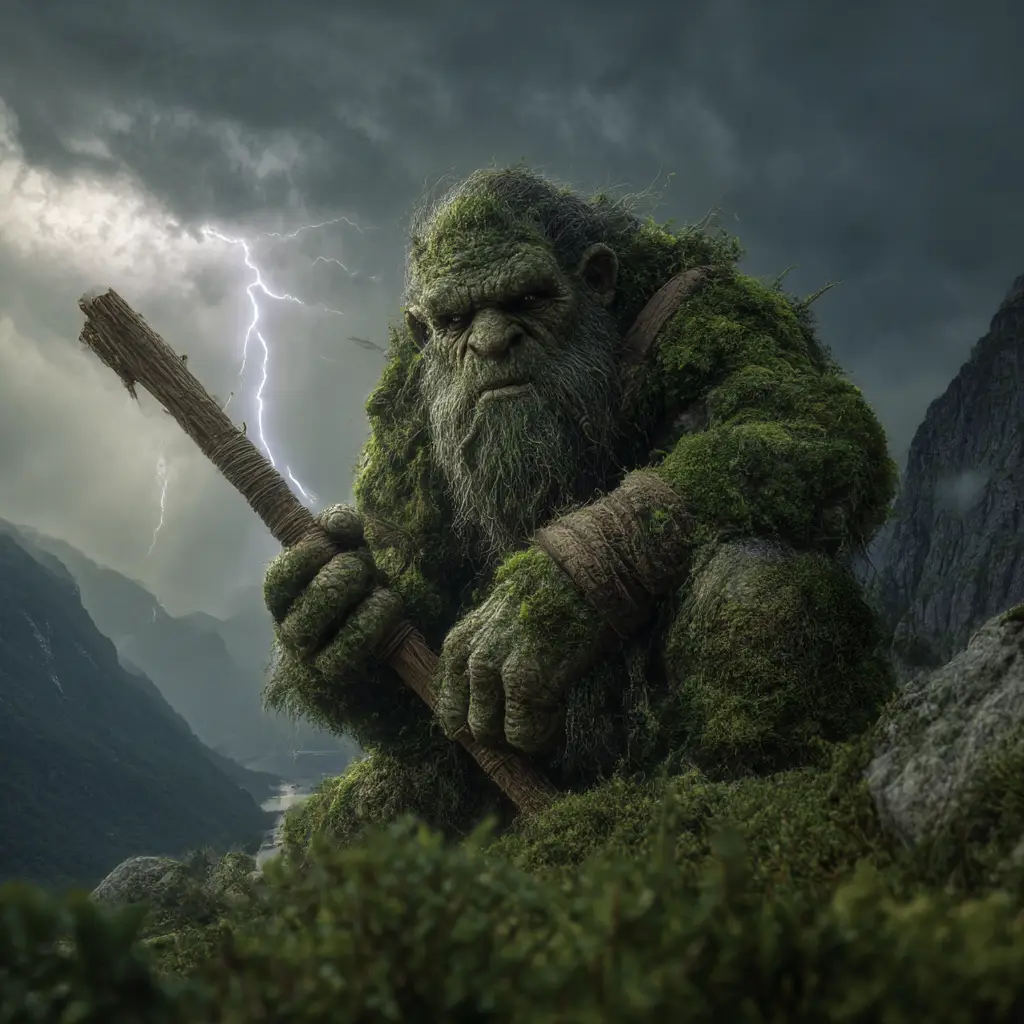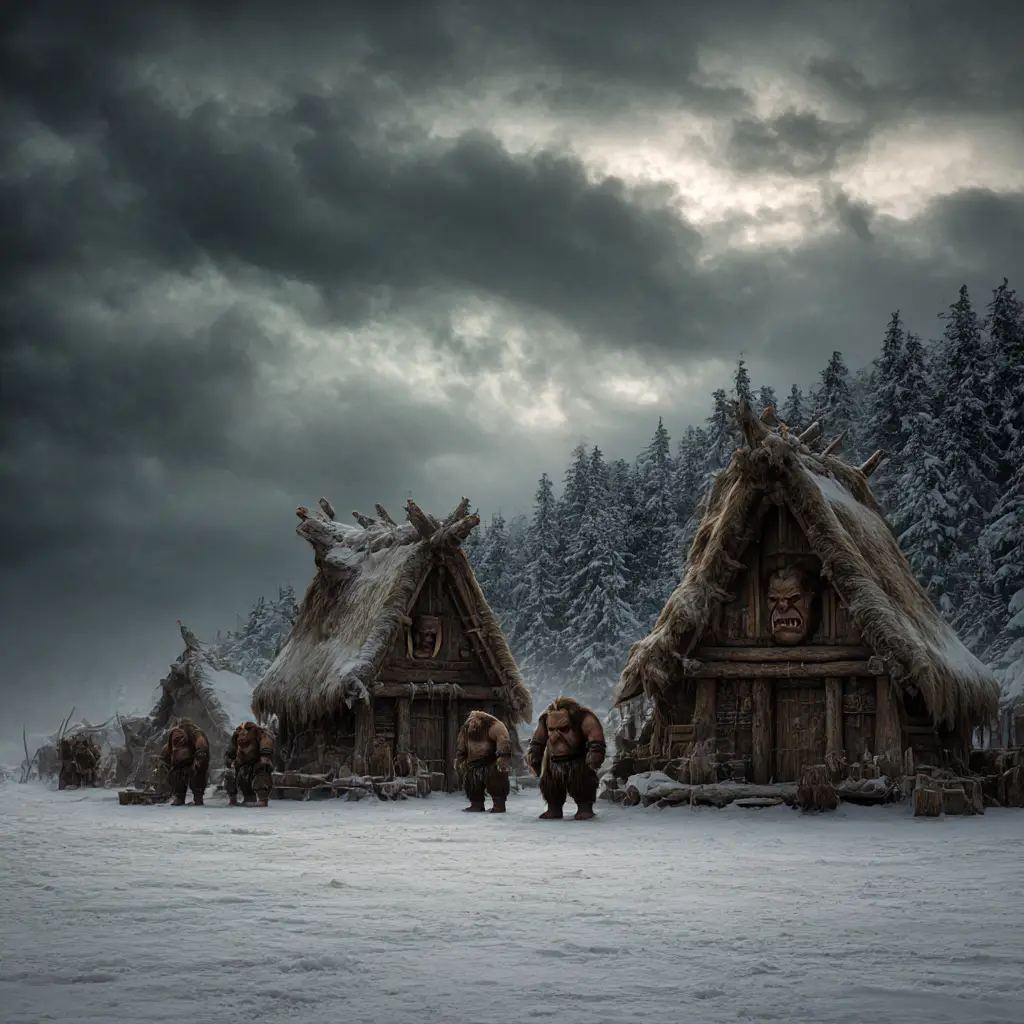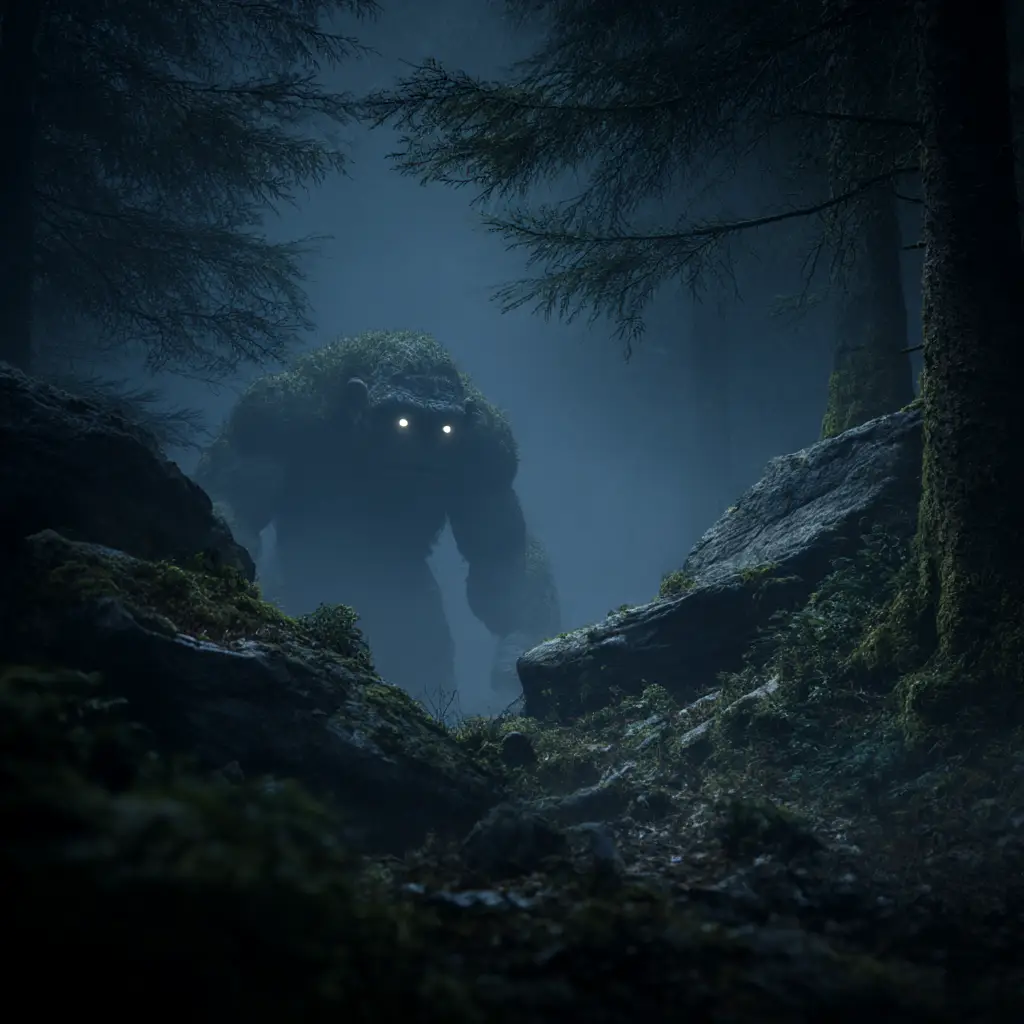Trolls are among the most recognisable and enduring creatures in Norse mythology and Scandinavian folklore. They appear in ancient sagas, poetic texts, and oral traditions, often depicted as beings of great strength, deep cunning, and a connection to the wild, untamed landscapes of the North.
Origins and Nature
The word “troll” comes from Old Norse “troll,” which broadly referred to supernatural beings or magical creatures. In early sources, trolls were not always distinct from other mythic races such as jotnar, the giants who were the enemies of the gods. Over time, however, the concept of the troll evolved into something more specific.
In the Norse worldview, trolls were part of the chaotic forces that stood in contrast to the ordered world of the gods and humans. They lived in the wilderness, mountains, forests, or caves, far from human settlements. Their existence symbolised danger, isolation, and the raw power of nature. Trolls were often said to emerge at night and turn to stone if touched by sunlight, a theme that carried through into later Scandinavian tales and became a defining trait.
Physical Appearance
Descriptions of trolls vary widely across the myths and regions. Some were depicted as huge, hulking creatures with rough, stone-like skin and coarse features. Others were smaller and more human-like, though still grotesque and fearsome. Their size and form often reflected their environment: mountain trolls were large and slow, while forest trolls were leaner and more agile. In many later folktales, trolls took on a more monstrous and less divine role, sometimes even being portrayed as dim-witted or comical.
Powers and Abilities
Trolls were often said to possess great physical strength and resilience. Many tales describe them hurling boulders, shaping landscapes, or guarding treasures hidden deep in caves. They were also credited with magical abilities, such as shape-shifting, controlling the weather, or casting curses upon humans. In some sagas, trolls took on human form to deceive people, while in others, they could communicate with animals or manipulate the earth itself.
Despite their might, trolls were vulnerable to cleverness and light. The sun was their greatest enemy, turning them instantly to stone if caught in its rays. This feature became symbolic of ignorance and darkness being defeated by enlightenment and order.
Trolls and Humans
Encounters between trolls and humans were central to many Norse and later Scandinavian stories. Trolls were said to steal livestock, kidnap humans, or demand tributes from nearby villages. Some tales speak of trolls taking human women as wives or stealing children to raise as their own. In other stories, brave heroes or clever farmers outwitted trolls using cunning tricks, Christian symbols, or the light of dawn.
The relationship between trolls and humans reflected the tension between civilisation and the wilderness. Where people lived on the edge of vast forests or near mountain ranges, trolls personified the dangers and mysteries of the natural world.
Cultural Legacy
Over centuries, the image of the troll transformed. In medieval Scandinavian folklore, they became more earthy and localised, often appearing as solitary beings living in the mountains or under bridges. Later, in literature and art from the Romantic and Victorian periods, trolls were portrayed with a mix of awe and humour.
Modern interpretations in books, films, and games continue to draw on the old Norse roots, presenting trolls as powerful ancient creatures bound to the land. Though their appearance and nature have changed, they remain one of the most enduring symbols of Norse mythic imagination, representing the wild, mysterious, and sometimes dangerous side of the natural world.



